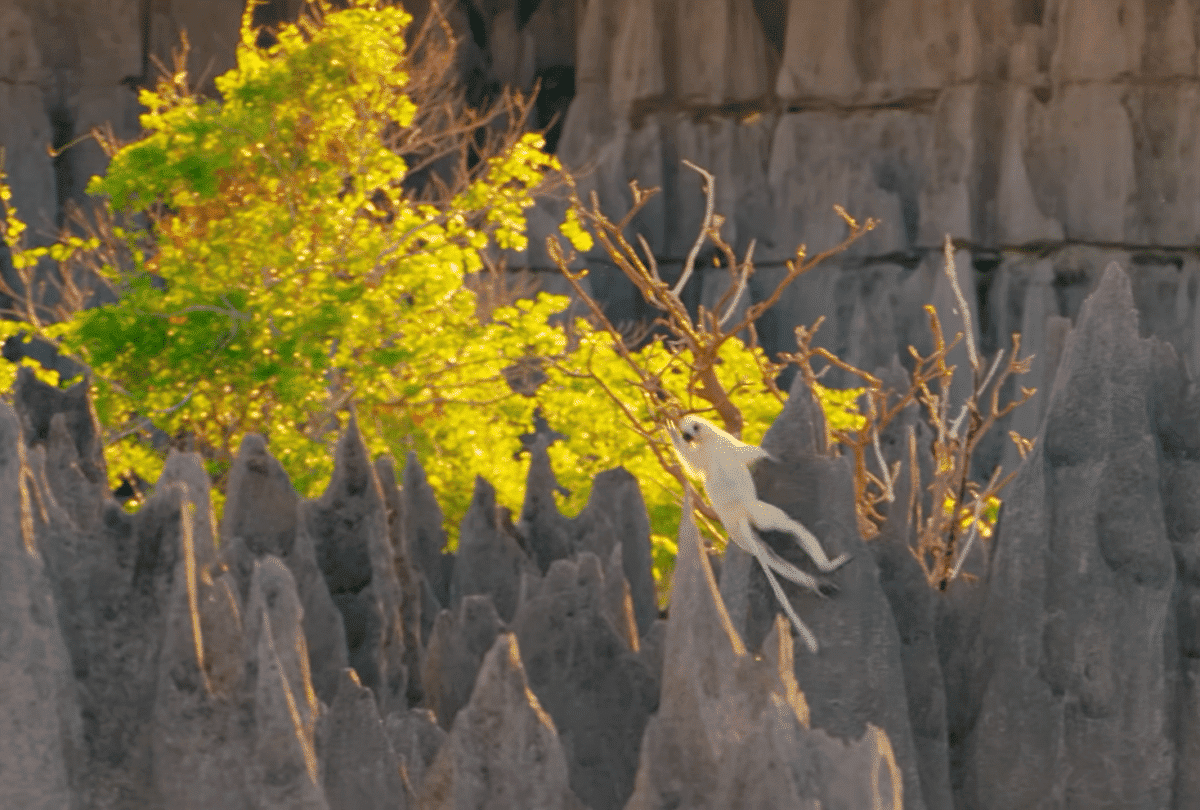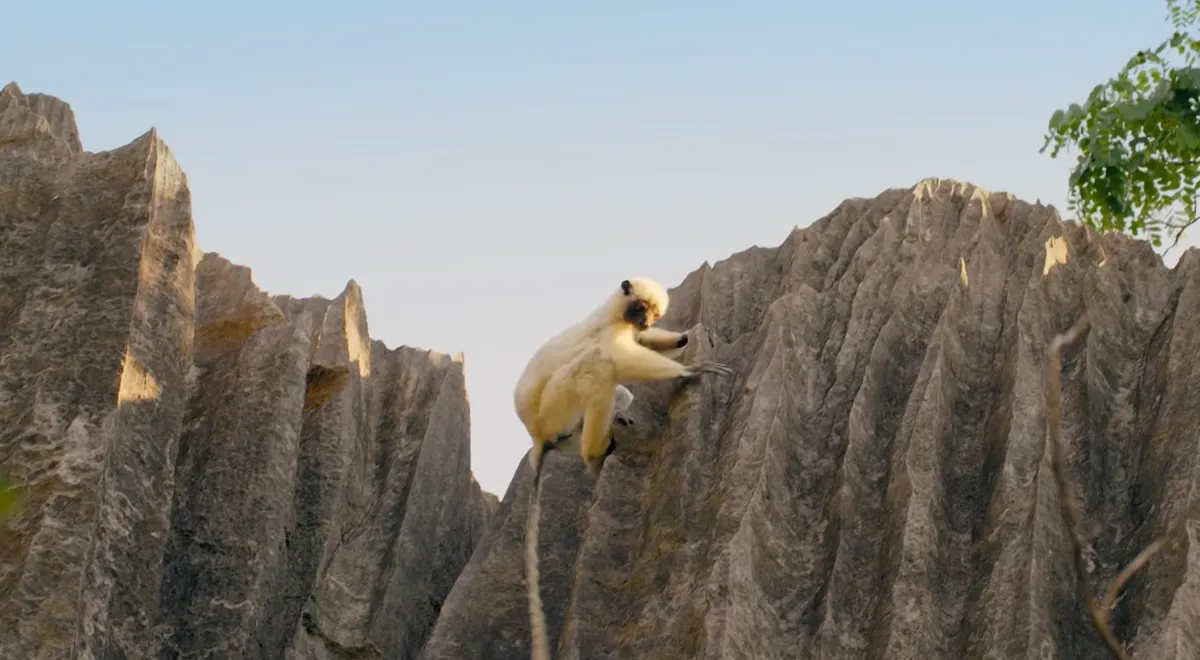Madagascar, an island situated off the southeast coast of Africa, is known for its exceptional biodiversity. The sifaka lemurs are particularly interesting, having evolved a remarkable method for leaping through their environment that is both awe-inspiring and thrilling to watch.
Masters of the Leap
Sifaka lemurs are renowned for their ability to leap across vast distances. With a single leap, they can cover up to 9 meters (nearly 30 feet). This trait is essential for their survival in the wild allowing them to traverse the treacherous limestone shards that characterize parts of their habitat in Madagascar.

Navigating Limestone Landscapes
The limestone formations in Madagascar are known as tsingy which means where one cannot walk barefoot. This sharp rock presents a challenge for most animals. However, sifaka lemurs navigate these razor-sharp limestone shards with remarkable ease. Their powerful hind legs propel them through the air, enabling them to leap from one shard to another without mistake. This ability not only helps them avoid predators, but most importantly helps them transverse large areas in search of food.

A Quest for Fresh Leaves
Sifaka lemurs travel great distances to find their primary food source: fresh, juicy leaves. These leaves provide them with the necessary nutrients they require. The lemurs’ ability to leap across great distances plays a key role in their ability to access these vital resources.
Adaptations for Leaping
The sifaka lemur’s body is perfectly adapted for their lifestyle. Their long, powerful hind legs are the key to their impressive leaping ability. Additionally, their strong, flexible tails aid in balance and steering mid-leap. These physical adaptations, combined with keen eyesight, enable sifaka lemurs to judge distances and execute their jumps accurately and precisely.
A Threatened Species
Sifaka lemurs face significant habitat loss, hunting, and climate change threats. Conservation efforts are crucial to protect these unique animals and their habitat. Preserving the forests of Madagascar is important not only for the Sifaka lemurs but also for the countless other species that call this island home.
Conclusion
Their ability to leap across treacherous limestone landscapes for food highlights their unique place in the ecosystem. It’s essential to remember the importance of protecting these and other species to maintain the rich biodiversity of our planet. Through conservation efforts, we can ensure that sifaka lemurs continue to leap through the forests of Madagascar for generations to come.
You might also enjoy:
Sifaka Lemurs: The Street Dancers of Madagascar
Orangutan rescued 8 years ago is finally ready for release
Why the Hainan Gibbon Is One of the Most Endangered Primates
Join our Forum for free today!

- The Bond Between a Wild Baby Bison and Her Rescuer - July 20, 2024
- An Excited Husky’s First Ever Time in Snow - July 20, 2024
- Top 20 Colorful Species To Brighten Your Day - July 14, 2024

